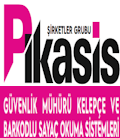- April 3, 2021
- Posted by: admin
- Category: Uncategorized

In 1946, Len Termin invented a spy device for the former Soviet Union that used radio as well as sound waves. Even if this device is considered to be a kind of inactive system, it can be considered as the first system in RFID technology. RFID technology actually started in the 1960s. Other similar technologies, such as IFF, were invented by the British in 1939 as an automatic response system and used in World War II to identify domestic and enemy aircraft.
Mario Cardolo is known as the first inventor of RFID technology. In 1971, the Port Authority of New York introduced a passive radio receiver and an inactive transmitter with memory, which is powered by signals. The system relied on a receiver with 16-bit memory and the sound produced. Cardolo’s original invention covered RF applications and had moderate sound and light transmission power. A business plan was presented to investors in 1969 that planned to use this technology in the field of transportation (vehicle identification, automatic identification system, electronic detector, vehicle guidance, vehicle performance control), banking systems (credit cards), security systems (personnel identification) and individuals, automatic entrance doors, monitoring systems and medical science (patient identification, patient history preservation).
The RFID system functions as an automatic identification system based on data storage and retrieval and can be controlled using equipment, tags, transmitters and radio receivers, by attaching or embedding a radio tag, label directly to a product, animal or Humans. In the structure of these elements (like the human body), they used radio waves to detect them. Most radio wave tags consist of two parts. The first part consists of a central circuit for storing and processing information, tuning radio waves and other related operations, and the second part consists of an antenna for receiving and transmitting radio waves and signals.
The new technology presented in this regard does not use RFID tags of the electronic circuitry, which allows identification without the need to use the electronic circuitry. In this way, it is possible to print RFID tags at a lower cost than providing separate radio tags to attach to them.
This type of tag can be read from a distance of one centimeter without the need to be within range of the tag reader (READER).
One of the uses of such labels is supply chain control and management in large and large organizations. The use of this system leads to an increase in speed and accuracy in assets and assets and the possibility of monitoring and controlling assets increases, which leads to cost savings and favorable financial savings for the organization.
The most important application examples of RFID technology are:
Passport: RFID tags are used in passports in many countries. The first passport (e-Passport) was issued in Malaysia and used this technology in 1998. In addition to the information on the passport information page, the electronic ID card issued in Malaysia also stores all information about the person’s travels (time, date, place), as well as all information about the time of arrival in each country and the length of stay to be determined in this way.
The RFID seal has been used in passports of the United States and the United Kingdom since 2006. The circuit used has the ability to store the same information printed on passport pages and can also hold a digital photo of the person.
This passport is designed to be covered with a thin layer of metal, making it impossible for unauthorized readers to read the passport when it is closed.
Transportation: In Europe, especially in Paris, the RFID system was introduced in 1995. Lyon and Marseille in France, Porto and Lisbon in Portugal, Milan and Turin in Italy and Brussels in Belgium use the same system as the international standard (CALYPSO RFID). The system is currently in use in Montreal, Canada, Mexico, Colombia and Norway.
In Hong Kong, most transportation systems use RFID technology for a fee.
The system was used to pay rent in 1997 and other uses such as vending machines, fast food restaurants and supermarkets quickly took over. These cards are charged using special devices and can be read from a few centimeters away from the reader.
Control and Monitoring: The Canadian Pet Identification Center started using RFID tags instead of barcodes. These tags are used to identify herds of cows and to control and identify inappropriate feed given to them.
Currently, CCIA labels in Wisconsin are used voluntarily on US farms.
Automotive Industry: Today, microwave RFID tags are used to control vehicles. RFID tags have been used in car keys since 1990 and it is not possible to open the car without a key or key containing the tag.
Animal Identification: RFID tags have also been used to identify animals. Various methods and systems have been presented so far.
Asset control: The use of RFID technology in advanced methods such as automatic identification technology has two specific values for asset control. First, using this system, accurate information about the actual inventory of the property is available, and the possibility of discrepancies in the inventory of the property and the amount listed in the available documentation is minimized and, in fact, completely eliminated.
On the other hand, it can be said that the use of this system will prevent and reduce the occurrence of errors, minimize manpower costs and make all business processes faster, more accurate and easier.
Use in the human body: The RFID seal used in animals is also used for humans. Professor Warwick was the first person to wear the system on his arm in 1998. Some nightclubs in Barcelona, Spain and Rotterdam, Netherlands use this system to identify and entertain their special guests.
Use in the library: Among the various uses of RFID technologies, we can mention its use in libraries. This technology simply replaced barcodes and was added to books, CDs and DVDs.
RFID tag, book title and etc. This includes book cookies, such as bookmarks, etc. and there is no need to use a database to access this information.
Source: www.sealstoneco.com
